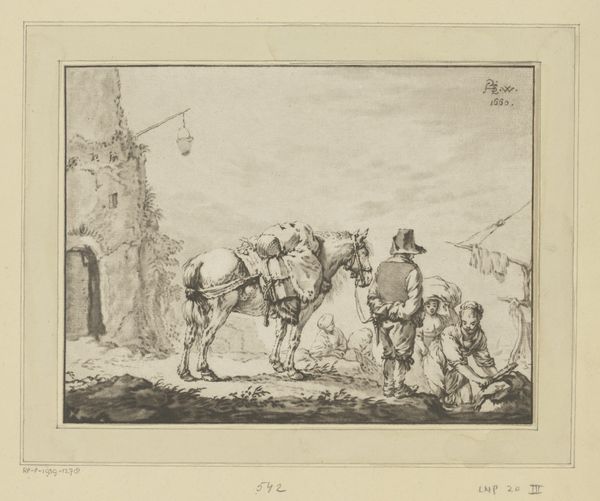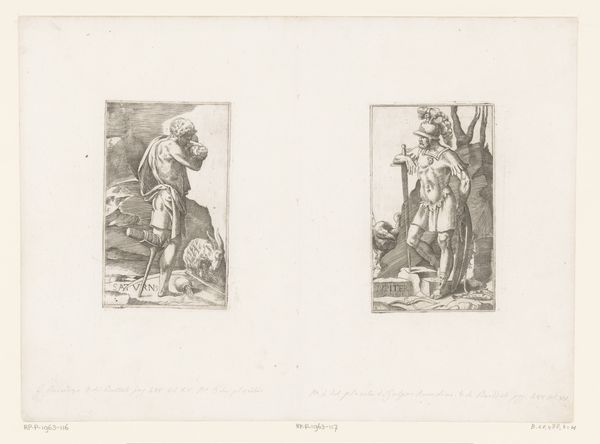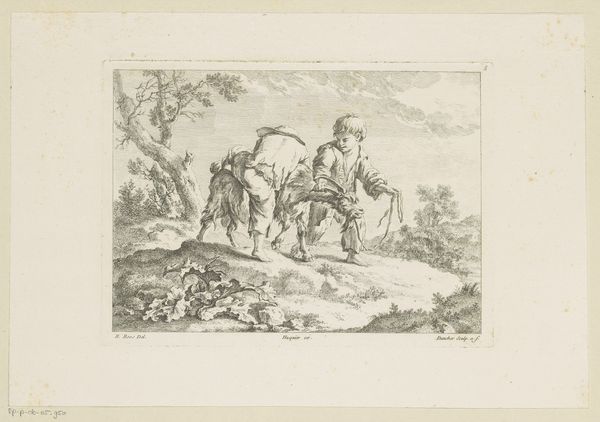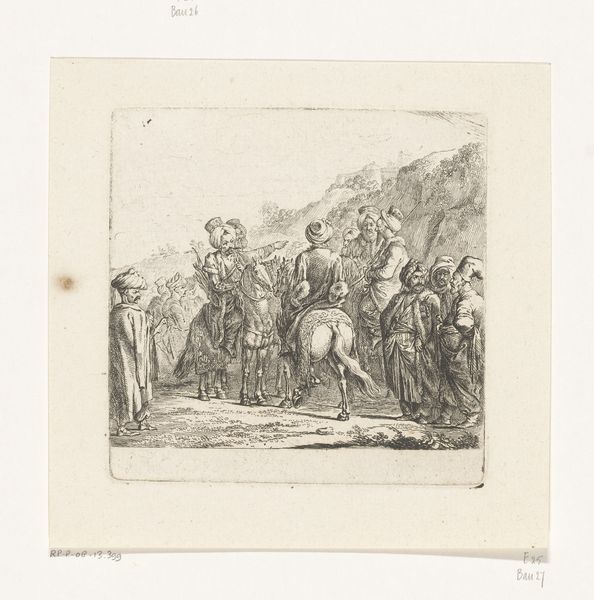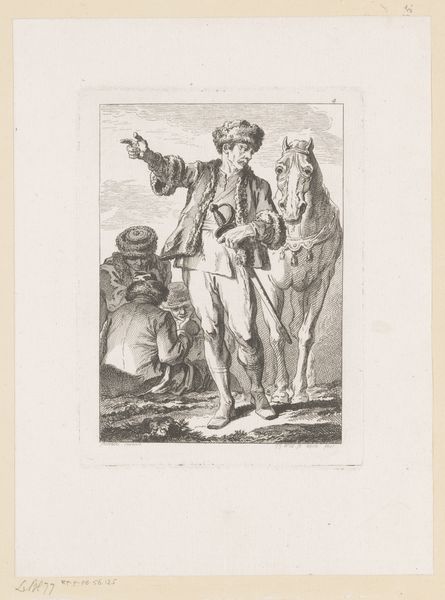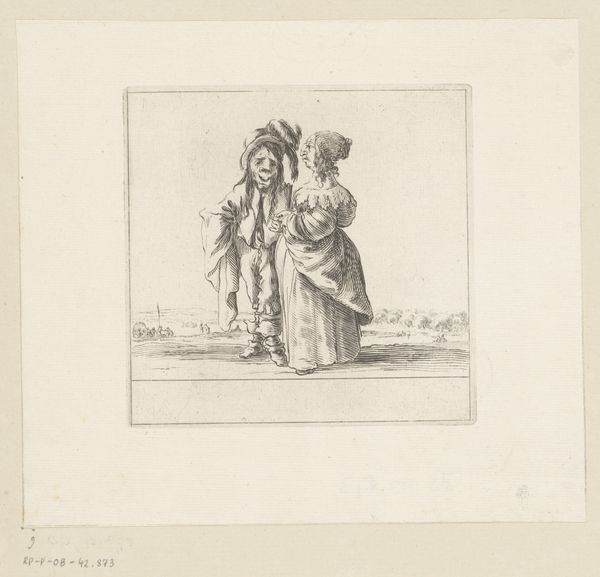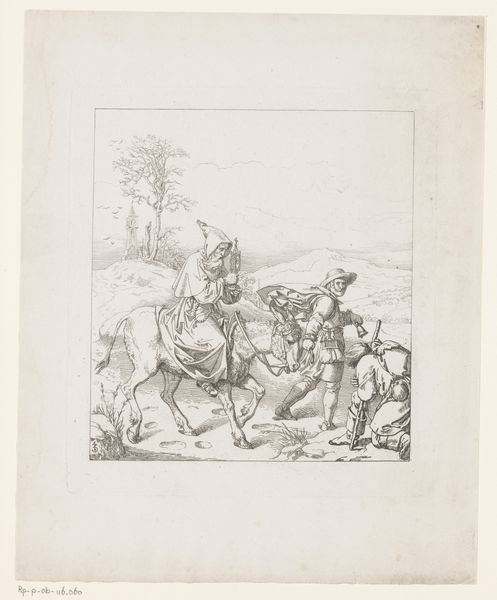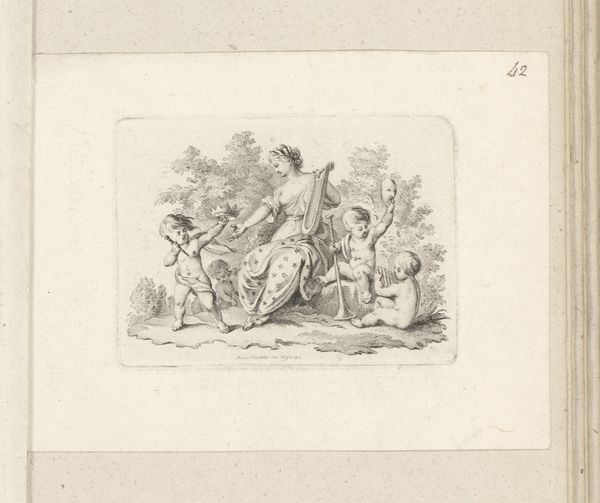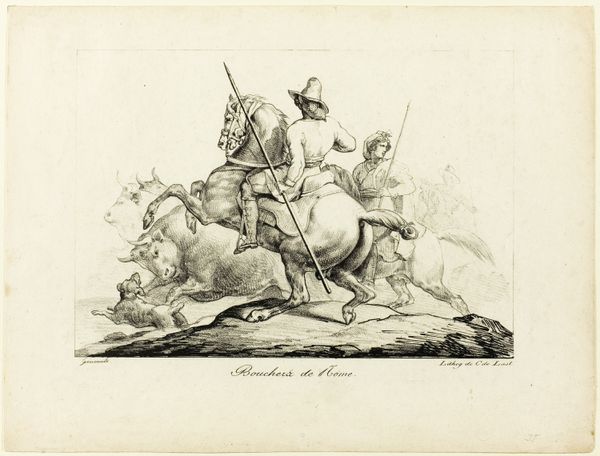
drawing, print, etching, paper, engraving
#
drawing
#
narrative-art
# print
#
etching
#
figuration
#
paper
#
history-painting
#
academic-art
#
engraving
Dimensions: 100 mm (height) x 128 mm (width) (plademaal)
Curator: This etching from 1787 is titled "Ulykkelige haendelser nr. 9," which translates to "Unhappy Incidents No. 9." It’s by Georg Christian Schule. What's your immediate take? Editor: Well, the composition feels...chaotic but precise? It's unsettling, with these bizarre figures enacting something sinister in miniature. There's a real sense of performance in this, with odd symbolic attire. Curator: Precisely! The Academic style emphasizes precise execution. Notice the use of line and shadow to create depth and form, especially on those bizarre hybrid figures. It looks historical, though. I wonder about its audience. What materials went into the production? Editor: Being an etching, we're talking about the labor-intensive process of coating a metal plate with wax, meticulously scratching the design, bathing it in acid to etch the lines, then finally, inking and pressing onto paper. And that paper… probably relatively expensive then, hinting at a bourgeois consumer, who’s willing to have the print in their collection. Curator: Right. There's a clear sense of history here—though a rather peculiar history! The title points to a specific narrative. The figures—part human, part something else—seem to be enacting a ritual or some symbolic drama, while at the upper left other figurines can be glimpsed seemingly placed on the top of what appears to be a classical temple, but not very elegant. Editor: I see them more as puppets manipulated by external forces. And what does that "something else" come from? Why that choice of fur and horns in rendering these creatures as less than human but seemingly masculine and in positions of power? Was this meant to critique power structures, I wonder? I feel Schule invites us to look closer at hierarchies that benefit a chosen few by dehumanizing others. Curator: Or perhaps Schule wanted us to be more attuned to life's unpredictability—like some kind of ironic warning. To be forewarned is to be forearmed, as the saying goes, right? Editor: Maybe. Still, I cannot shrug off the nagging thought of Schule’s craftsmanship. How did the etching itself speak? This artwork has become something other than paper through its encounter with time and how its themes resonate within the socioeconomic forces around us. Curator: So, after our journey, I'm left with the notion that "Unhappy Incidents No. 9" is Schule's cryptic reflection on the absurdity of existence. We have our puppet masters. Editor: For me, it throws into stark relief how every piece, from the raw materials to the final printed image, embodies cultural anxieties—and potentially a critique of its own making.
Comments
No comments
Be the first to comment and join the conversation on the ultimate creative platform.

